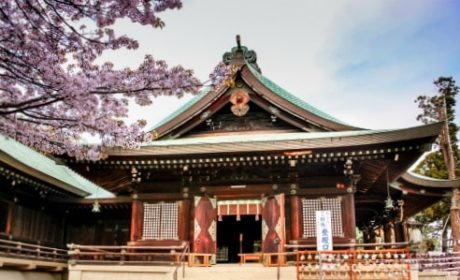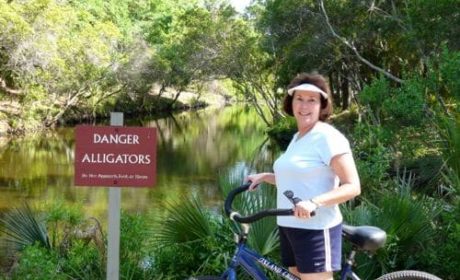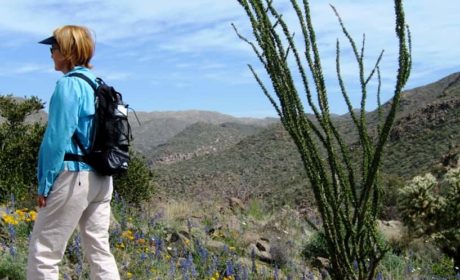We love exotic travel tales that include active adventures, especially when it involves biking off-the-beaten path. Guest contributor, Sue King from Nomadic KU, did just that as she cycled her way through dusty backwoods while exploring Myanmar’s Bagan temples by bike.
On our own: Bagan cycling tour
Iconic images of the ancient temples of Bagan in Myanmar feature in the dreams of many a traveler. Like Angkor Wat or Machu Picchu, it is one of those places shrouded in an aura of mystique, stirring wanderlust in the hearts of those who love to explore.
Despite a grueling bus journey from Nyaungshwe, my partner and I arrived in Bagan late at night, full of anticipation for this bucket list trip. We shared a taxi with a couple of German backpackers, and headed to our guest house in New Bagan. A few of the temples we passed were spectacularly illuminated by floodlights, heightening our sense of enthusiasm for the days that lay ahead.
The following morning, after a breakfast of samosas, chickpeas and chunks of bread, we hired bikes from the guest house at around a dollar each, and set off armed with maps to begin our Bagan temples cycling tour. Alternative methods of transport included horse and cart, mini-van and motorized bikes, but we were happy with our choice of basic Chinese style bicycles (complete with built-in locks), allowing us to be free-wheeling and independent.
Exploring the Bagan temples by bike
We followed the main road, stopping off at any temple that caught our eye. We had an abundance of choice, with two thousand, two hundred of them spread out over a vicinity of sixteen square miles of dry flat plains, interspersed by vegetation. It wasn’t long before we found ourselves heading off road onto dirt tracks, leaving a cloud of dust behind us as we pedaled along.
It felt as though we had been transported back in time. Ancient temples scattered randomly, tempted us to stop regularly to investigate. Some had mysterious secret passages or stairs taking us to high lookouts, from which we were rewarded with spectacular views of Bagan.
Others had giant outside steps which we climbed under the intense sunshine. From small stupas, partly obscured by undergrowth to grand structures, we attempted to explore as many as we could.
Boomer Travel Tip
On active adventures like cycling trips, joining a medical evacuation program is a must!
In all but the largest of the temples, there were few—if any—people, making it a pleasure to meander around at will. In the more populated areas, hawkers endeavored to sell paintings, postcards and figurines. Tourism being relatively new to Myanmar, these guys were refreshingly amiable and non-aggressive in their approach.
Fascinating and beautiful as the larger temples were, it was the lonely stupas, often crumbling and neglected, which we most enjoyed. Taking advantage of the peace and tranquillity, we took our time, before setting off once again on Bagan temples bike tour. Occasionally, we passed goats being herded along the dirt tracks or an ox sitting in front of a temple munching on straw.
The defining feature in every temple or stupa that we visited, was a Buddha statue. Each was unique, the individual pose representing an important event in the life of Buddha. Some of the buildings were in a state of disrepair, but the Buddha was always intact.
A Delicious Vegetarian Feast in Bagan
At midday, weary from the heat and in need of sustenance, we stopped to lunch at Yar Pyi, a vegetarian restaurant. Our delicious meal consisted of poppadoms with avocado salad, tomato and peanut curry and coconut rice. The friendly family who owned the restaurant were welcoming and a delight to talk to.
Slowly we made our way back to New Bagan. Cycling along one of the backroads, the magical sound of chanting monks coming from inside one of the domed temples accompanied our ride. After traveling through Southeast Asia for two months, we both agreed that today had been the most exceptional day so far.
A second day exploring Bagan temples on a bike
The following day, saddle sore, but determined, we continued our two wheeled adventure, seeking out any sites that had eluded us the day before.
A woman offered to make up my face with thanaka, a yellow paste ground from tree bark. A popular beauty product in Myanmar, it also protects the skin from the sun and is anti-bacterial.
I had spotted many Burmese people with lines, circles and swirls of the paste on their faces. I gladly accepted a free sample, and continued on my way feeling like a local.
One final day in Bagan: Mount Popa and a Magical Sunset
On our final day, we hired a car and driver (approximately $30.00) and headed to Mount Popa approximately thirty-one miles from Bagan, where Taungkalat monastery is perched on the plug of an extinct volcano. Rising seven hundred and thirty seven meters above sea level, it is a stunning sight, the gold stupas at the summit, glinting in the sun.
On the way, we made a stop at a village where palm oil and peanut oil were produced using traditional methods involving a bull and a primordial looking contraption. We came away with a bottle of palm spirit, which we left for the boys at the guest house. At fifty per cent alcohol, it was far too potent for either of us!
A multitude of mischievous macaques greeted us on our seven hundred and seventy seven step ascent of the monastery. Vendors sold monkey food and cleaners consequently scrubbed the stairs, clearing up after the monkeys and requesting donations for their labor. Despite their efforts, it was still a challenge avoiding monkey feces.
The pinnacle provided us with shrines to explore and sweeping views of the countryside. Pilgrims offered flowers and incense to thirty seven venerated nat spirits which form part of the Burmese belief system.
Our last evening was spent watching the sun sink over the temples of Bagan. Opting not to go to the popular and inevitably crowded sunset temple, we asked our driver to take us to an alternative spot. He chose well.
At the top of a temple we enjoyed the sunset and a magnificent view in a peaceful setting. A perfect way to bid farewell to the magical city of Bagan.
Frequently asked questions about traveling to Bagan
There is a $20.00 sightseeing/conservation ticket fee payable when entering Bagan.
Visit the official Myanmar tourism website for more information.
Buses from Yangon take 13 hours and from Mandalay 6 or 7 hours. Prices vary according to company.
Peak season is between November and January, when Bagan is at its coolest, with clear blue skies.
Check out Seat 61 for information on traveling by train in Myanmar.
More cycling tours for boomer travelers
Cycling, or biking, is a fun way for boomer travelers to explore the world. Here are more ideas for you:
- In Japan, go cycling on the Kibji Trail.
- Visiting Germany? Take a cycling tour of Sylt.
- Go biking in Barcelona.









